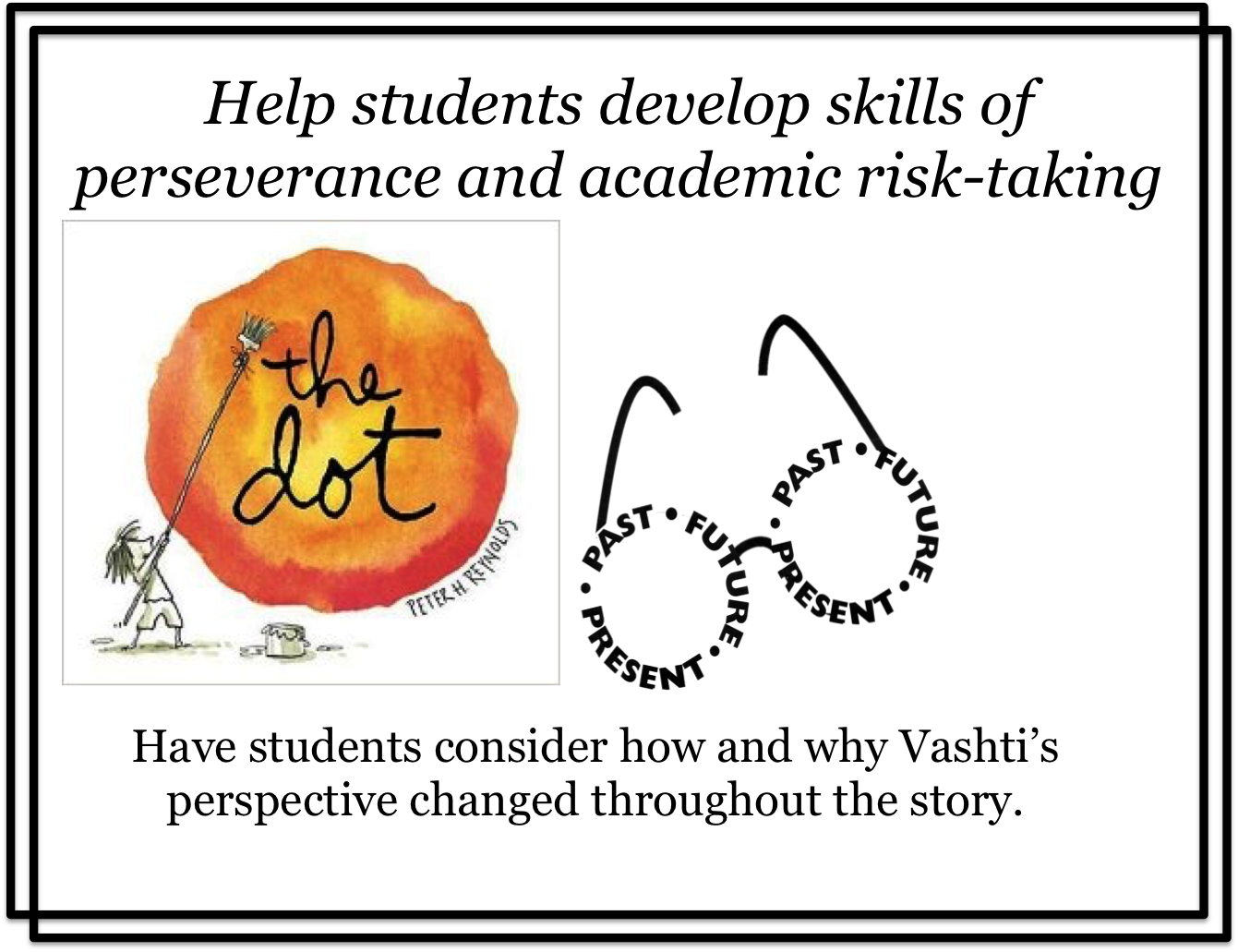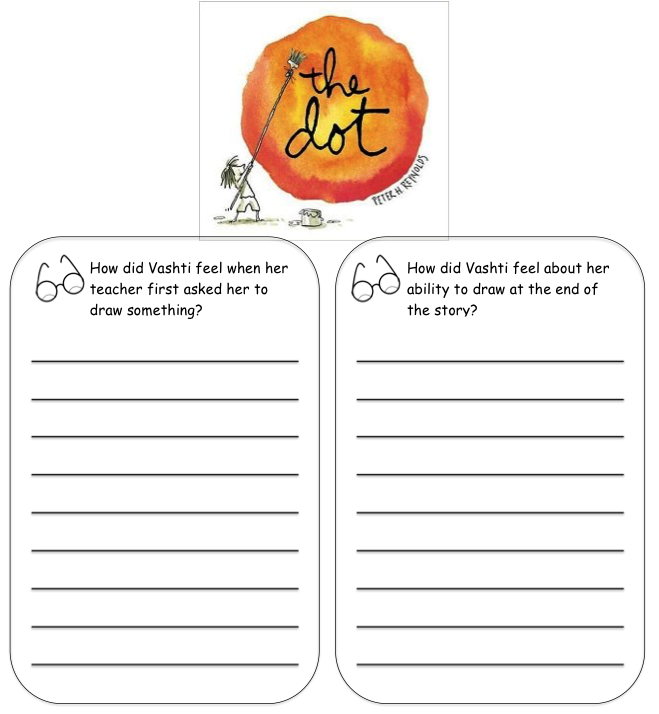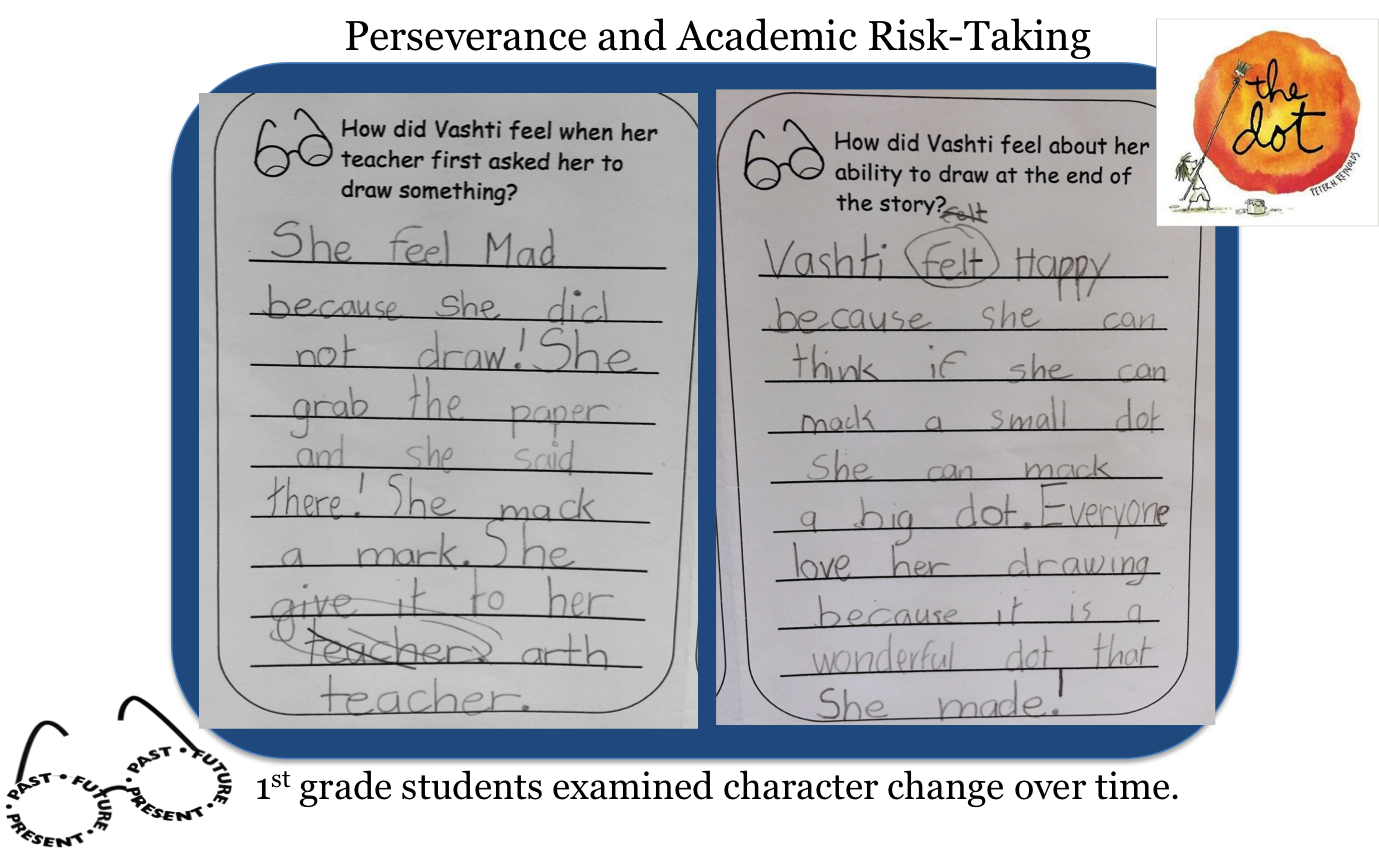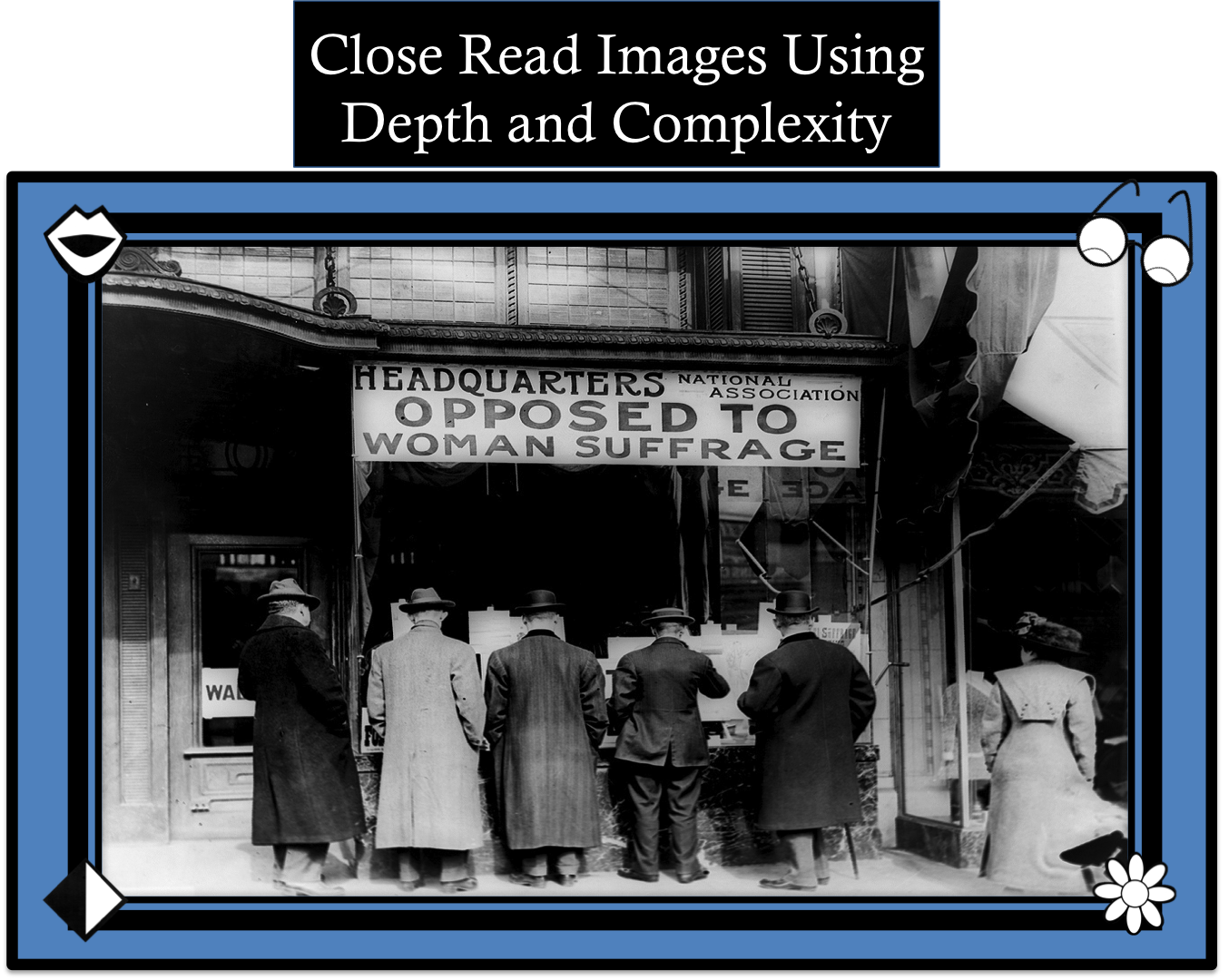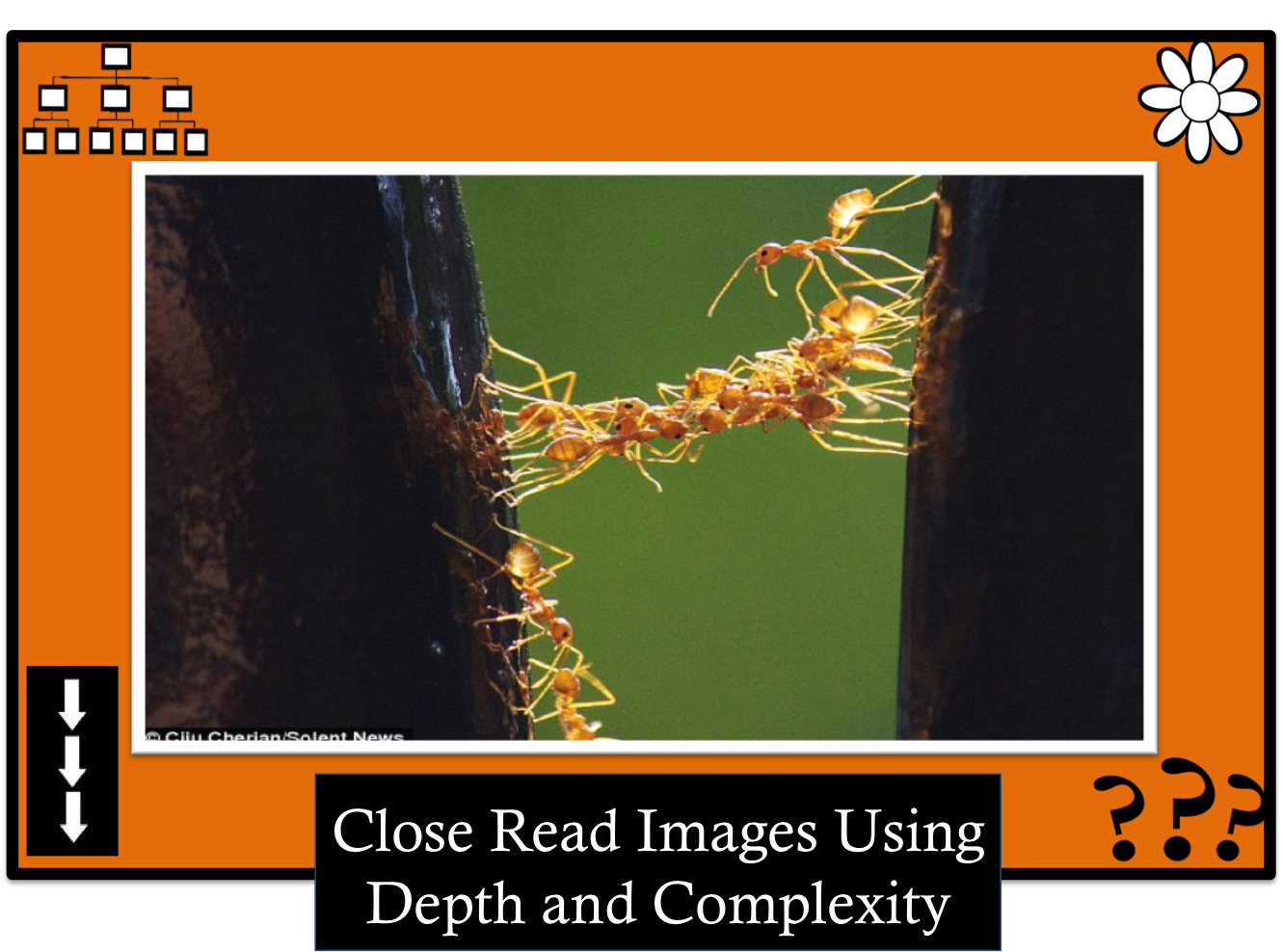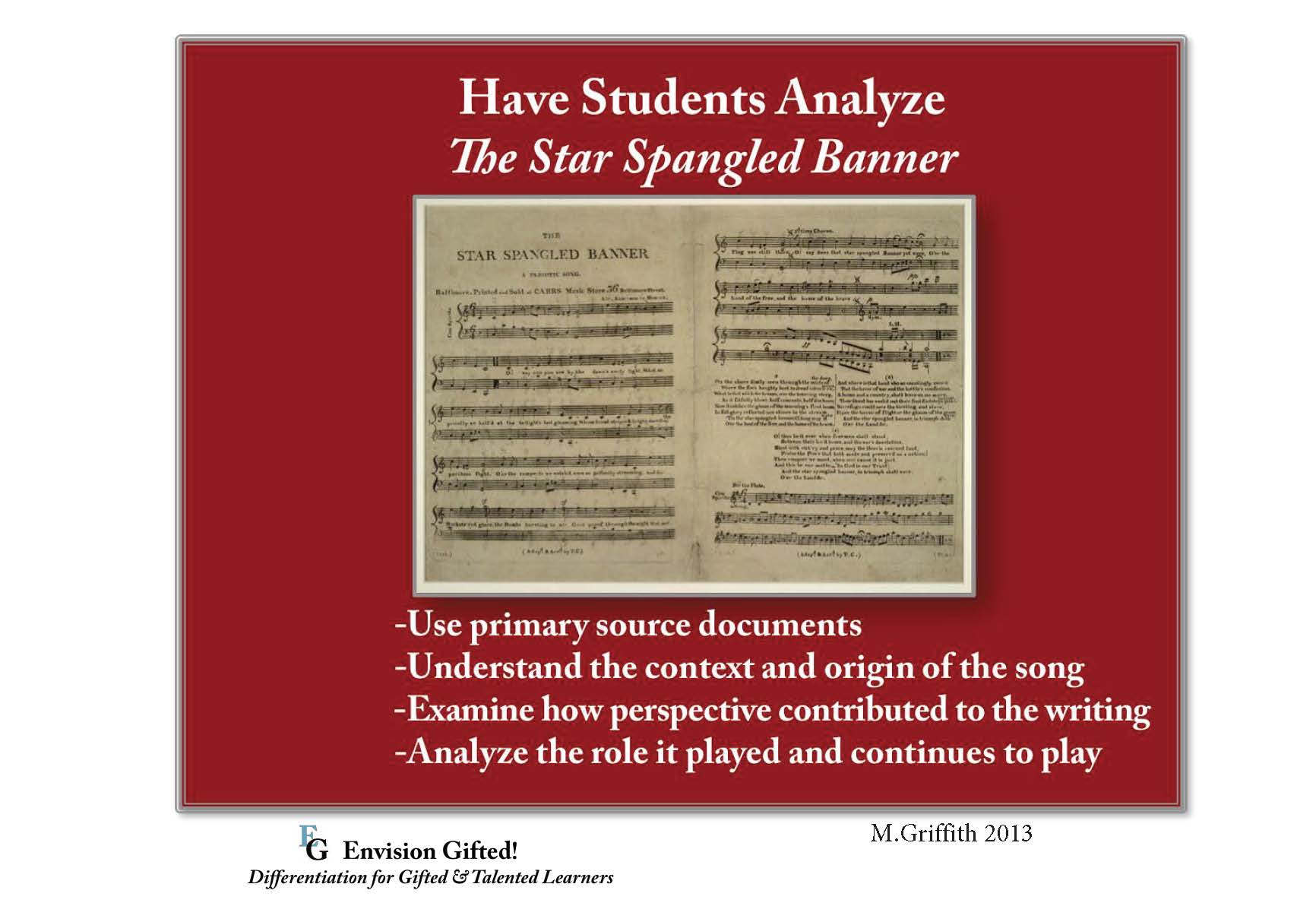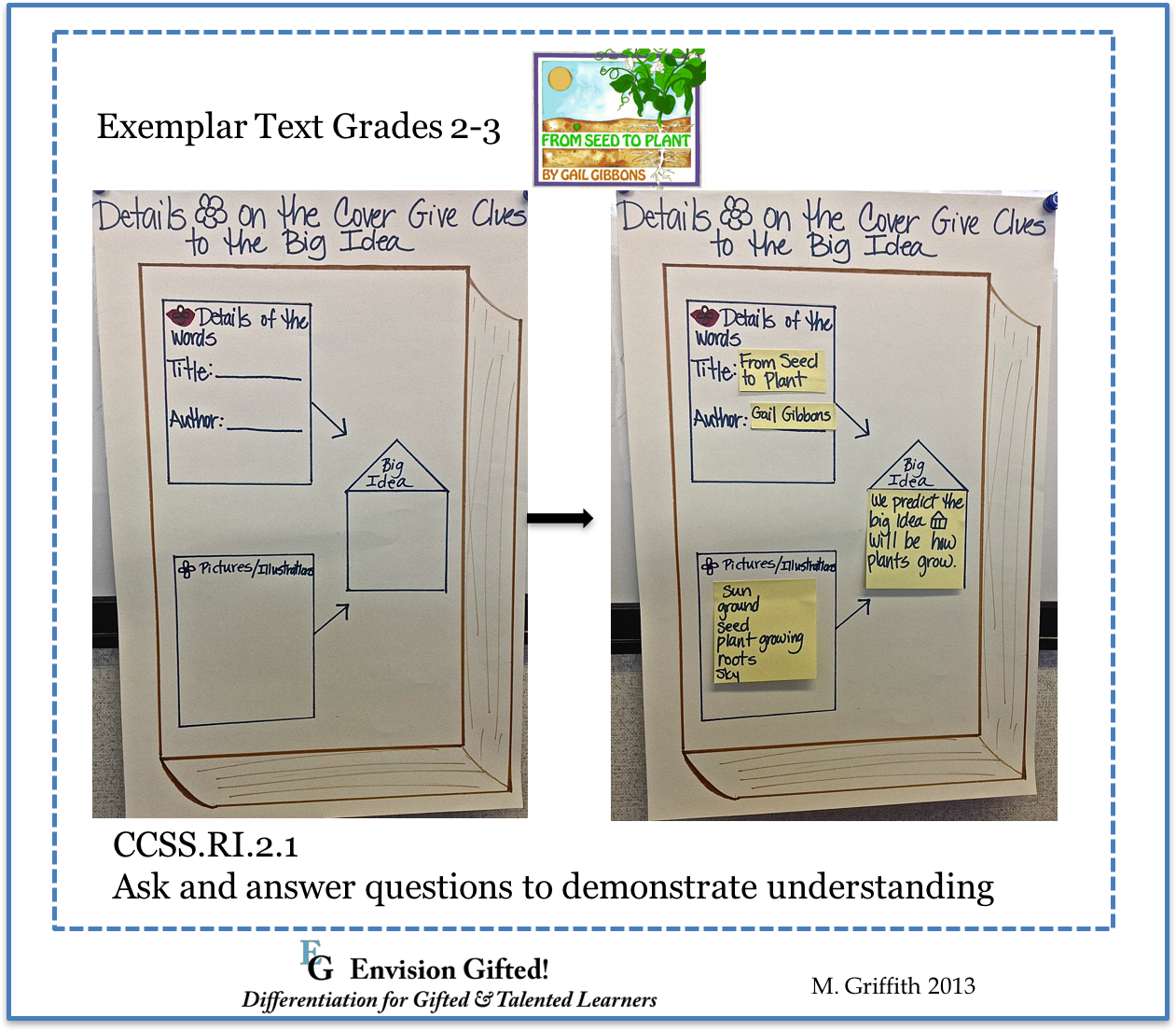Common Core- Differentiation for Gifted
Many of the resources you will see on this site fit nicely with the Common Core and extend the standards, so please take a look at the other pages even though they are not titled Common Core. This page will highlight specific Common Core standards and lesson ideas.
Good literature, whether novels or picture books, lend themselves well to multiple Common Core Literature Standards.
Common Core Exemplar Text– The Dot
In The Dot, Peter Reynolds brings to life the relatable character, Vashti, a student who is reluctant to be an academic risk-taker. Although this is a picture book, the level of analysis can make this appropriate for Kinder and up. With support, even our youngest students will be able to determine the key ideas and lesson from this story.
Common Core Exemplar Text- Two Bad Ants
With the story, Two Bad Ants by Chris Van Allsburg, CCSS RL 1.1, 1.2, 1.3, 1.4, and 1.7 are easily applied.
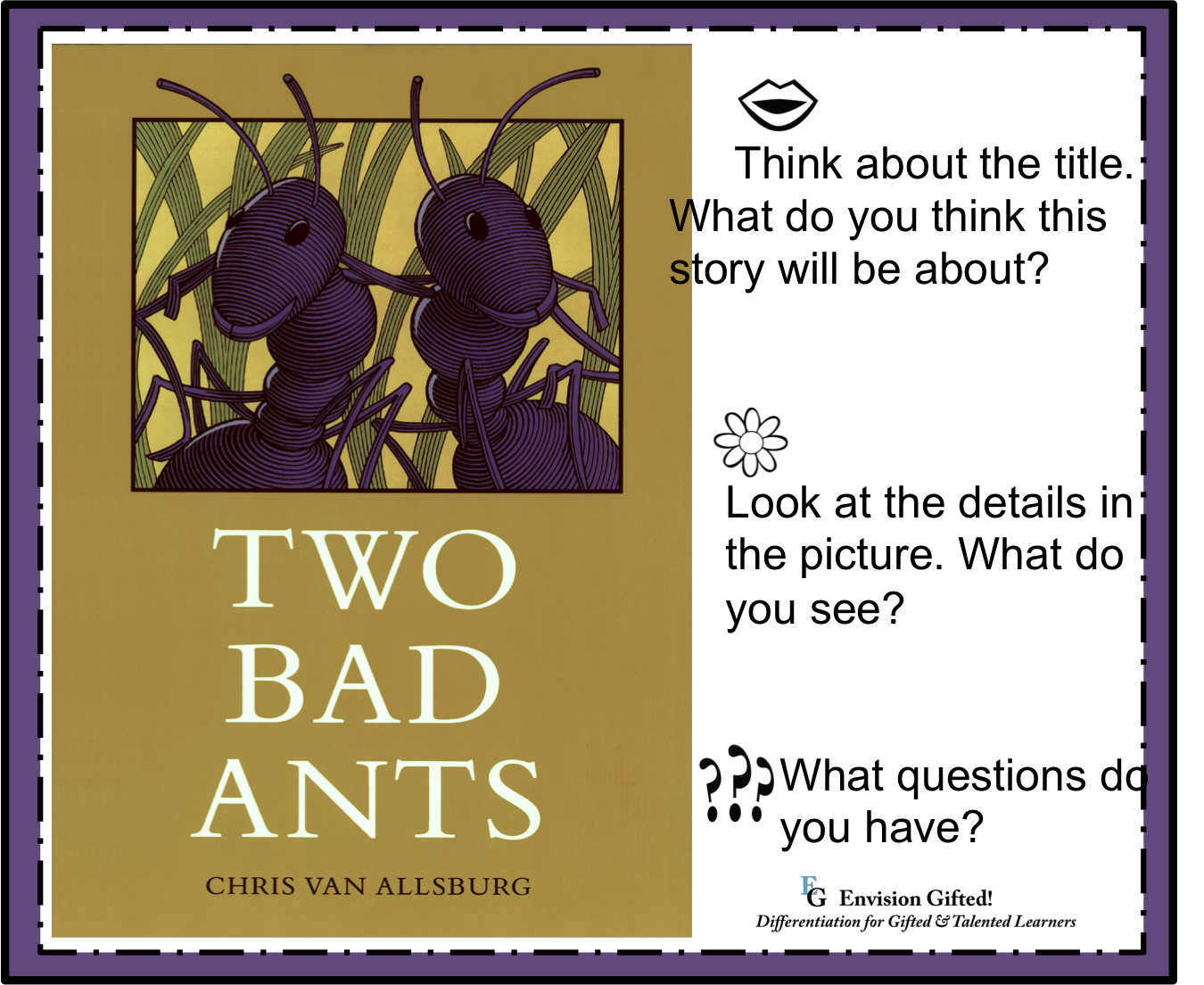
Reinforce how to use Depth and Complexity when “reading” a book cover. Think out loud and model for students. Really push them to examine the details of the picture. What do they see? How do the ants look to them? My think out loud- “They don’t look like bad ants to me. I wonder what the problem in this story is going to be.”
Throughout the story, continue to go back to the title- Two Bad Ants.
Have students apply Depth and Complexity to determine the Big Idea (lesson) of the story.
Bring in the perspective icon and discuss with students whether they thought the two ants were bad. Be sure to have tell you “How they know”. With younger students, the teacher can act as the scribe. This reinforces the importance of citing textual evidence.
Continue the discussion and bring in the Big Idea icon. Ask students to identify the lesson the ants learned.
The Grasshopper and the Ant- CCSS.ELA-Literacy.RL.2.2
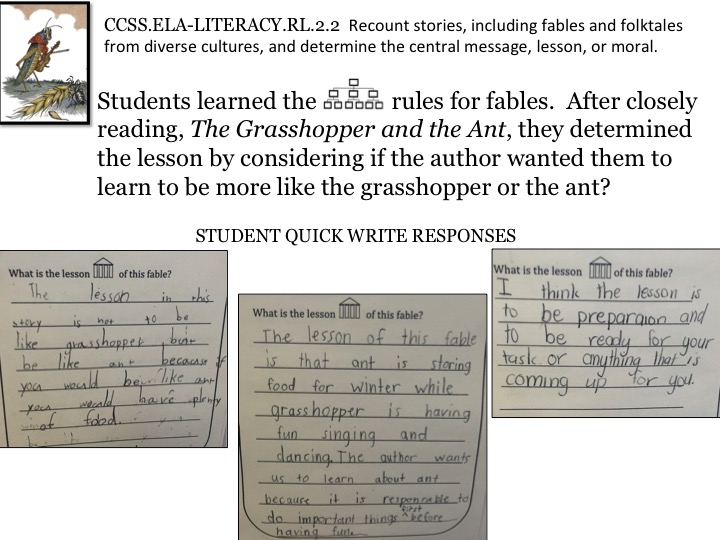 This is from a 2nd grade class at my school. Students determined the big idea/lesson in the story. Students demonstrated their understanding through a quick write.
This is from a 2nd grade class at my school. Students determined the big idea/lesson in the story. Students demonstrated their understanding through a quick write.
Point of View Influences How Events are Described
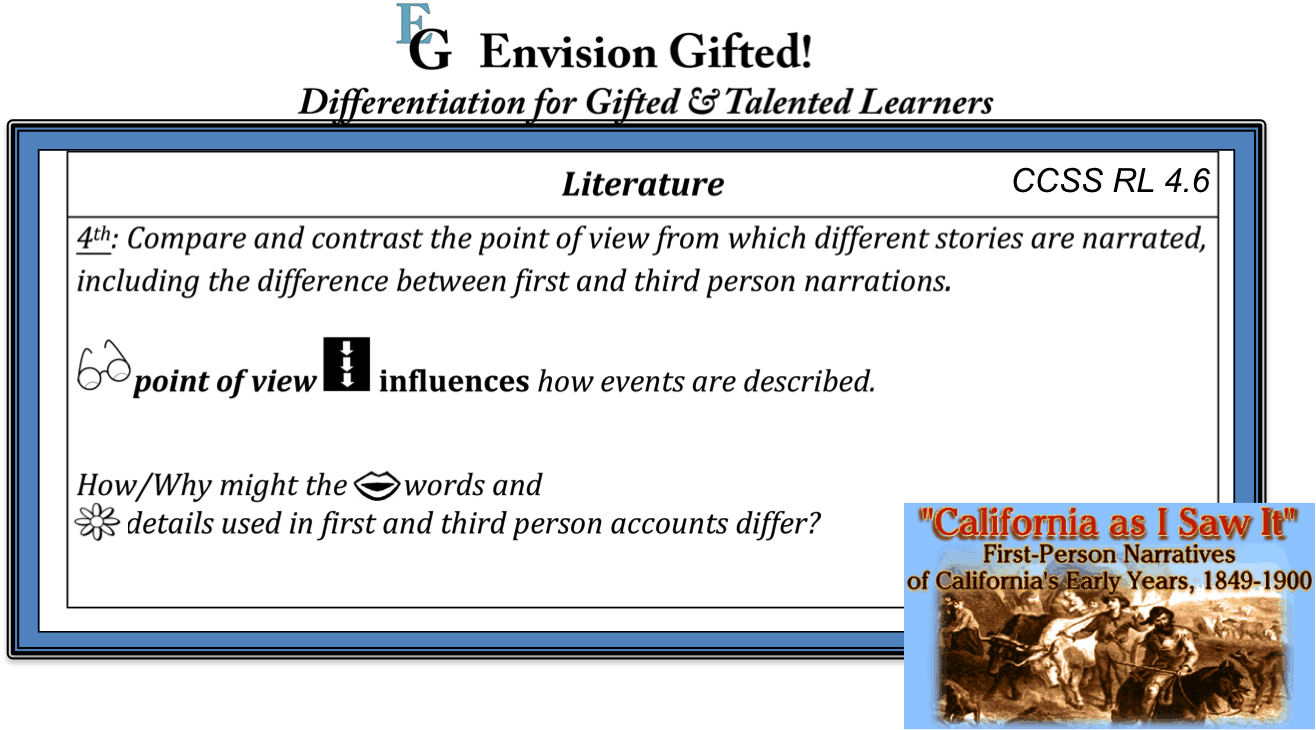 CCSS RL4.6 Compare and contrast the point of view from which different stories are narrated, including the differences between first and third person narratives.
CCSS RL4.6 Compare and contrast the point of view from which different stories are narrated, including the differences between first and third person narratives.
Help students understand how/ why words and details used in first and 3rd person accounts might differ.
![]()
Visit the Library of Congress at http://memory.loc.gov/ammem/cbhtml/cbhome.html to access first person narratives of the Gold Rush in their collection, “California as I Saw It, First Person Narratives of California’s Early Years, 1849-1900“.
Download File for student use. CCSS RL 4.6 POV influences details
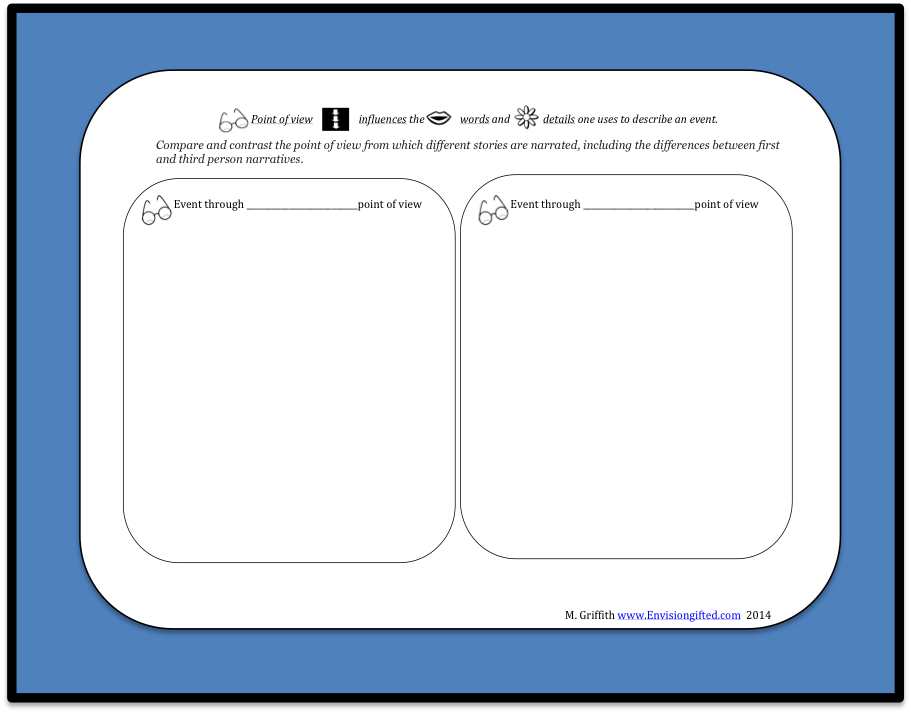
Use Patterns to Discover the Lesson in a Story
Anchor Standard R.2- Determine central ideas or themes of a text and analyze their development; summarize the key supporting details and ideas.
Anchor Standard R.7–
Integrate and evaluate content presented in diverse media and formats, including visually and quantitatively, as well as in words.
Analyze the Star Spangled Banner
Help history come alive for your students by making it relevant and interesting. Students will gain necessary background knowledge to critically read and comprehend the U.S. National Anthem.
I have included downloadable files below, but be sure to also check out the Smithsonian Website for great resources and background information on the song.
The Star Spangled Banner Origin, Context, Contribution
Common Core – Exemplar Texts
 Exemplar texts are example texts that demonstrate the level of complexity and quality the Common Core State Standards require. They serve as guideposts for teachers in selecting appropriately complex text for their students.
Exemplar texts are example texts that demonstrate the level of complexity and quality the Common Core State Standards require. They serve as guideposts for teachers in selecting appropriately complex text for their students.
Link to the CCSS Exemplar Text
CCSS.RL.1.3 Describe characters, settings, and major events in a story using details.
Exemplar Read Aloud Text: Mr. Popper’s Penguins
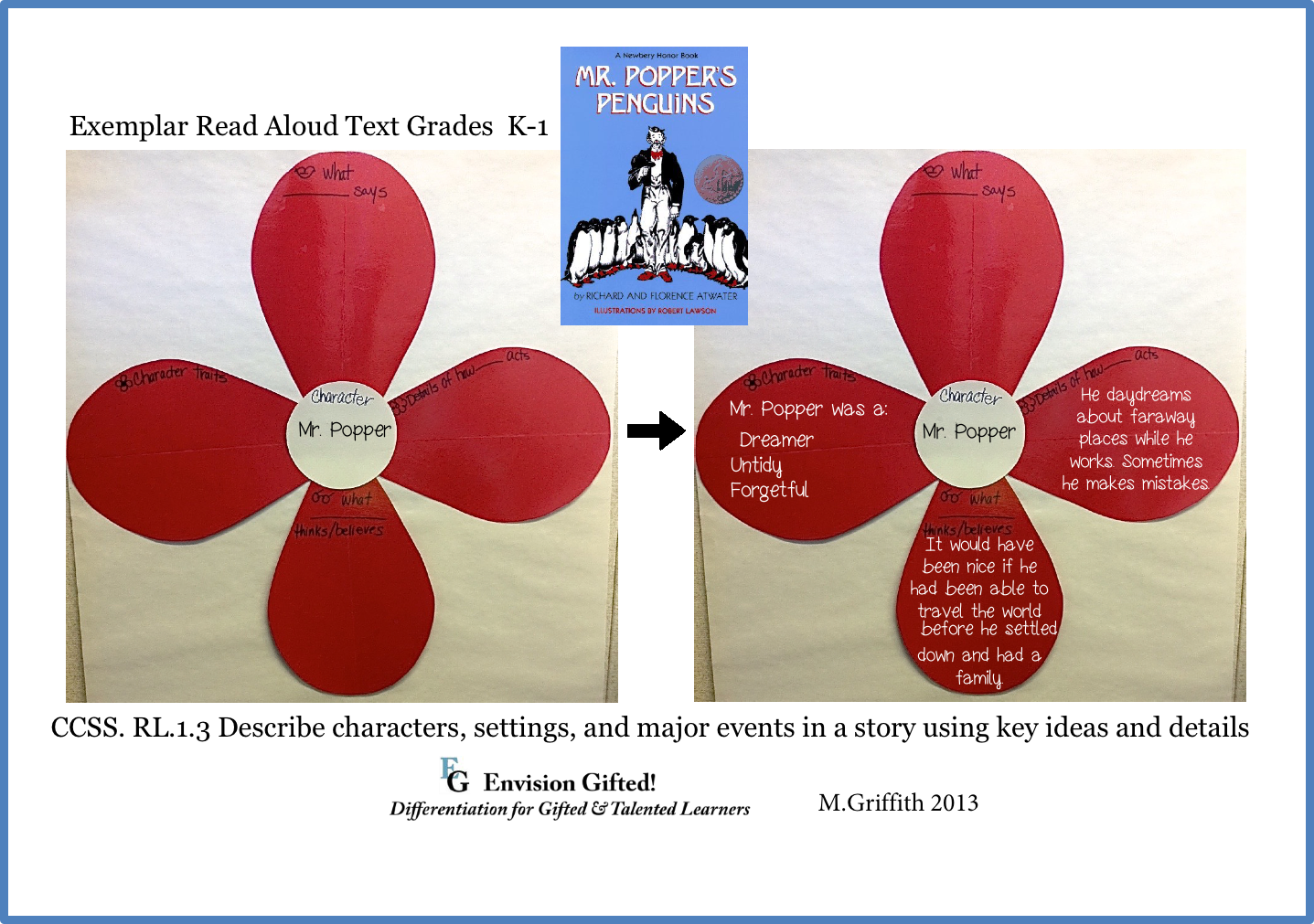 The information used in this sample is drawn from Chapter 1.
The information used in this sample is drawn from Chapter 1.
The petals are laminated and removable for reuse throughout the year. The laminated petals can be filled in by the teacher or given to student groups to complete.
Character Analysis Extend It Further!
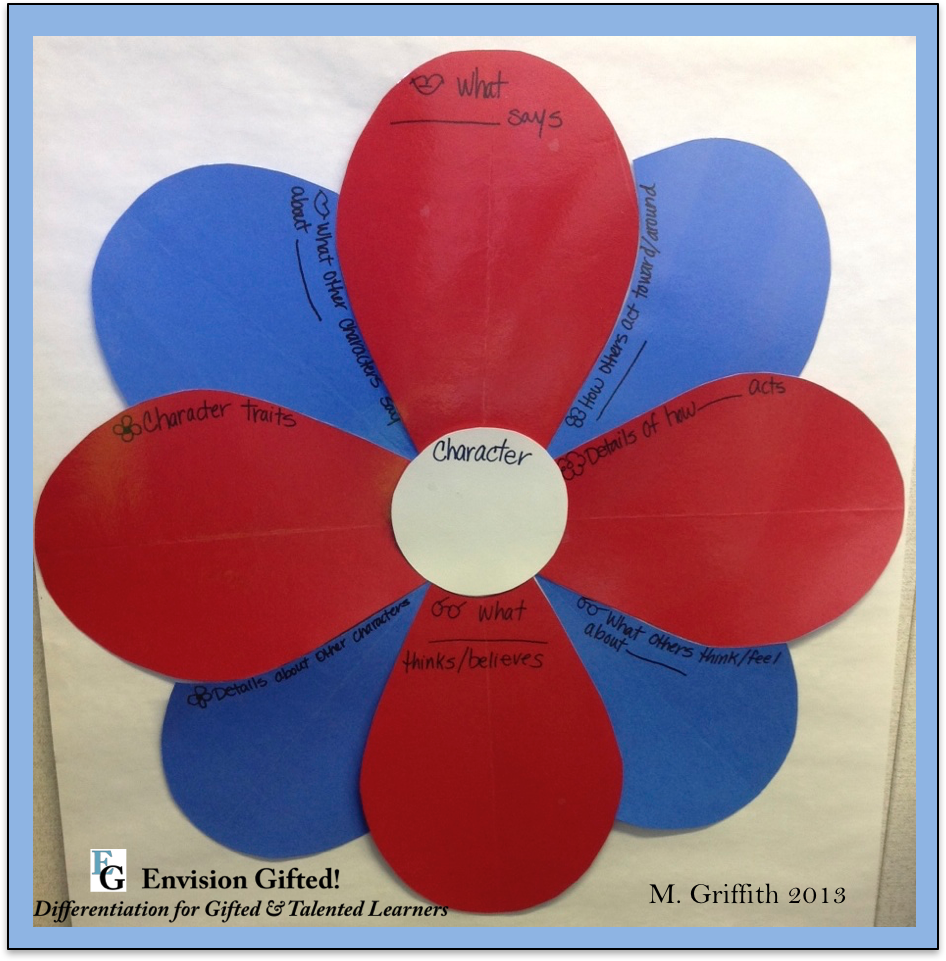 Have students analyze not only key details about the main character in a story, but also that character as seen through the eyes of other characters. Prompts include: Key details about the supporting characters; How other characters act around or toward the main character; What other characters think/feel about the main character; What other characters say about or to the main character.
Have students analyze not only key details about the main character in a story, but also that character as seen through the eyes of other characters. Prompts include: Key details about the supporting characters; How other characters act around or toward the main character; What other characters think/feel about the main character; What other characters say about or to the main character.
CCSS.RI.2.1
Ask and answer questions to demonstrate understanding
Exemplar Text Grades 2-3 From Seed to Plant
What is this book about?
or
What should I learn from this book?
Students use pictures and words from the cover to make predictions about the big idea of the book.
